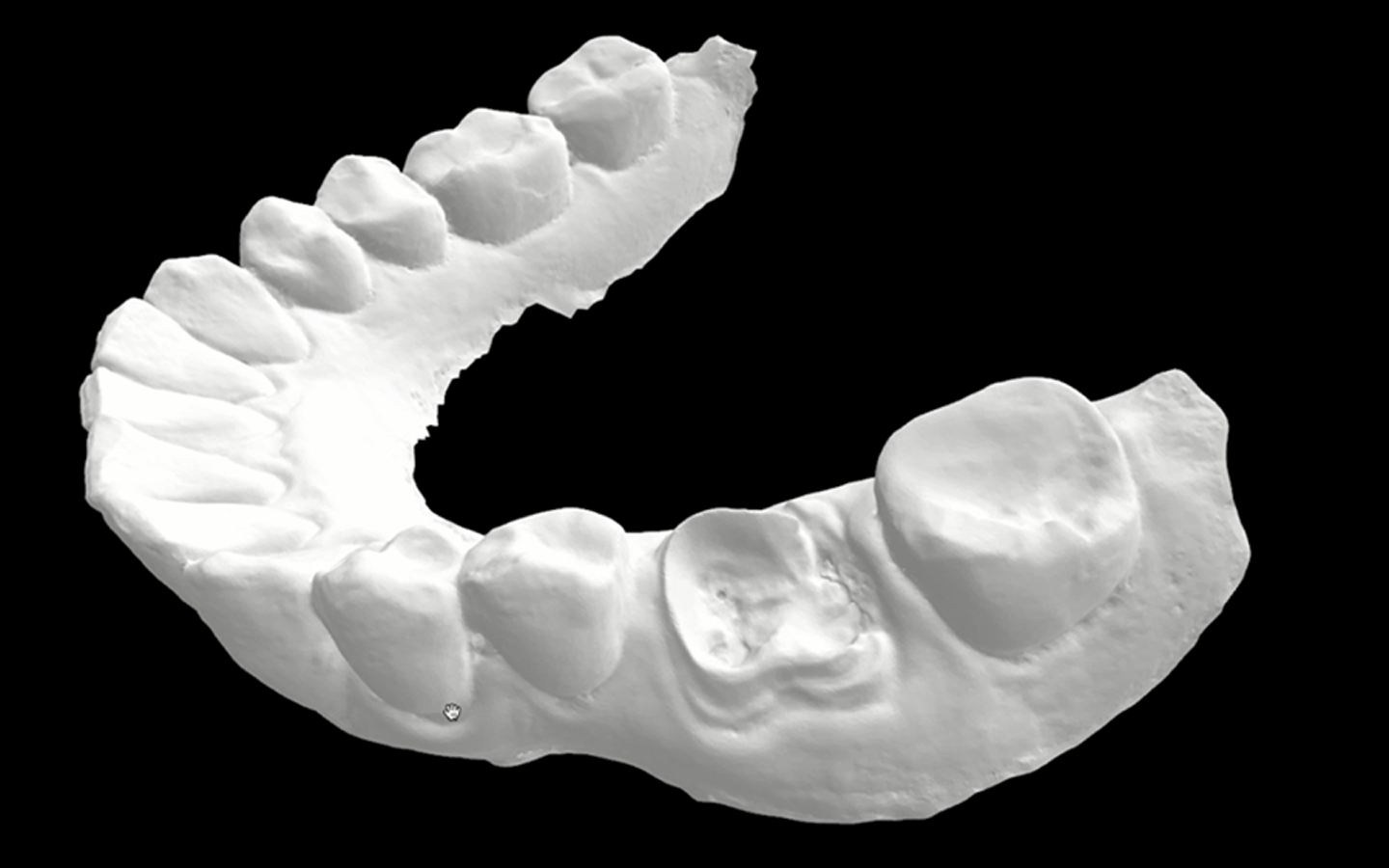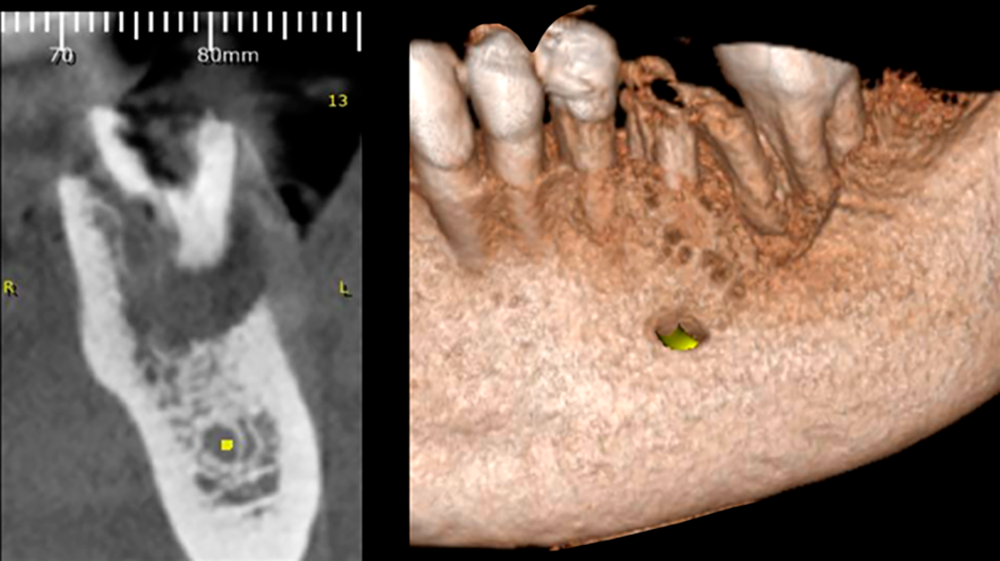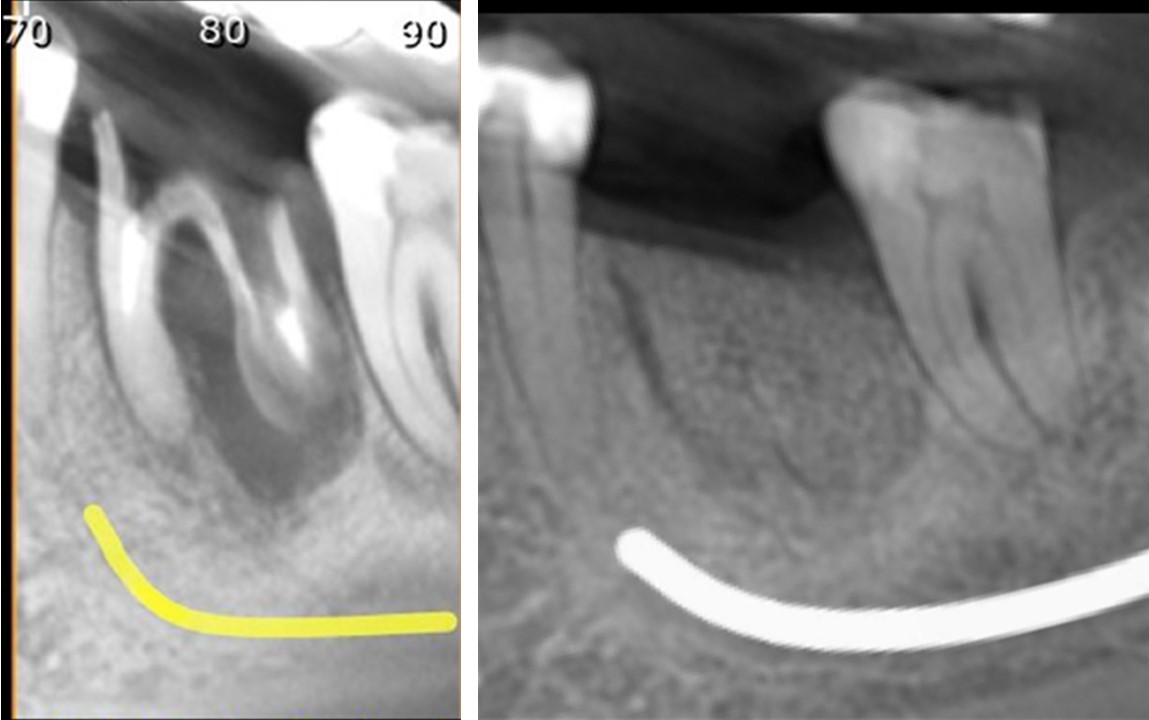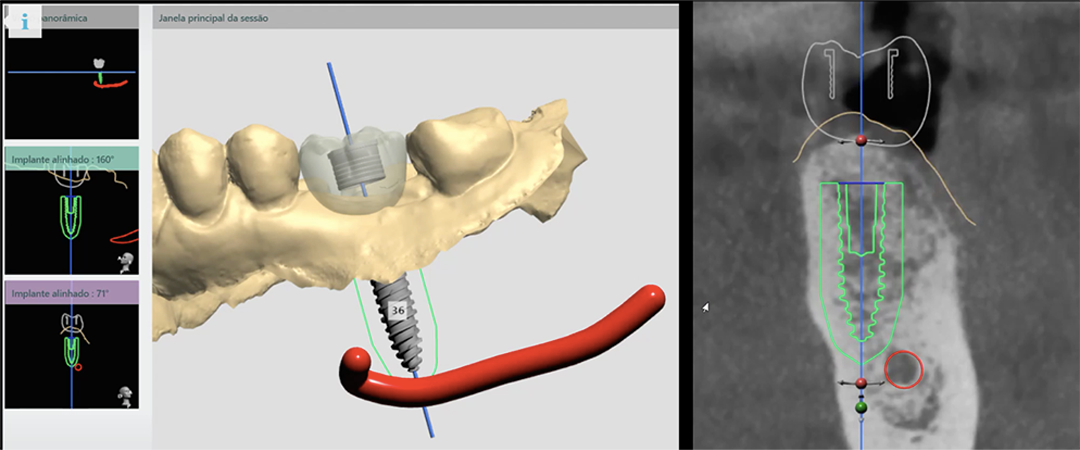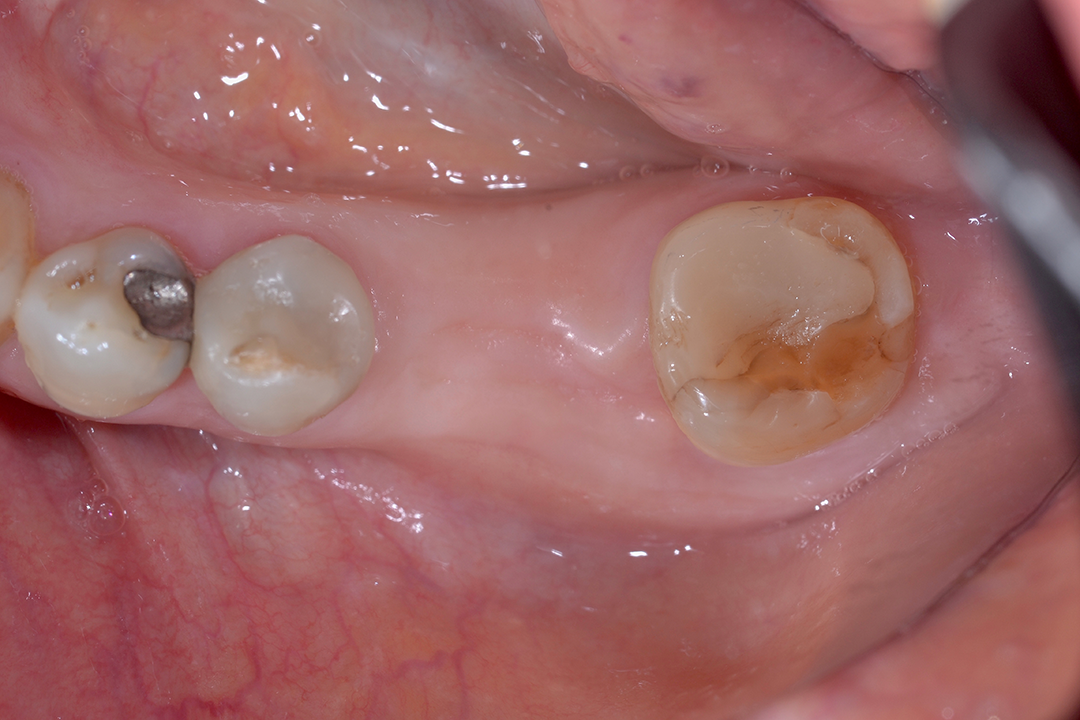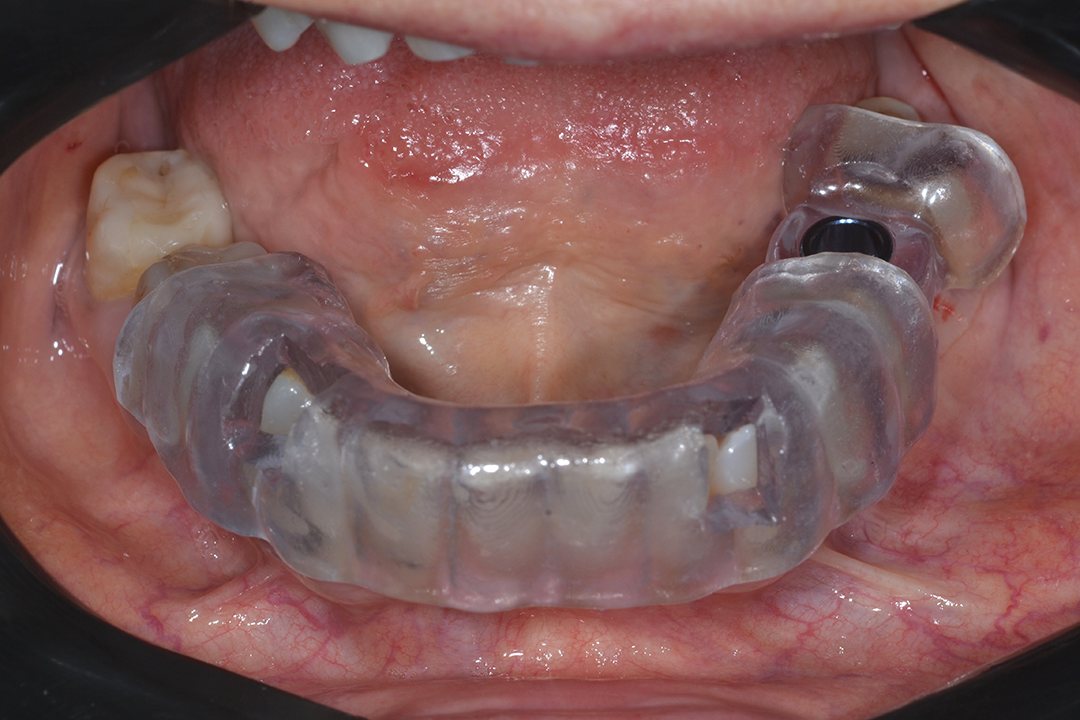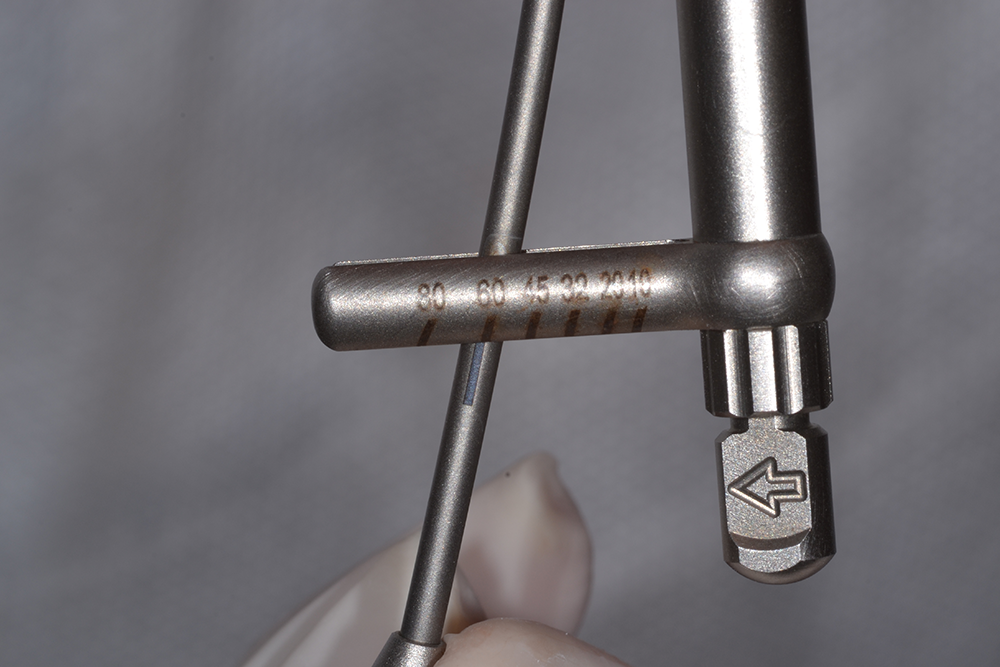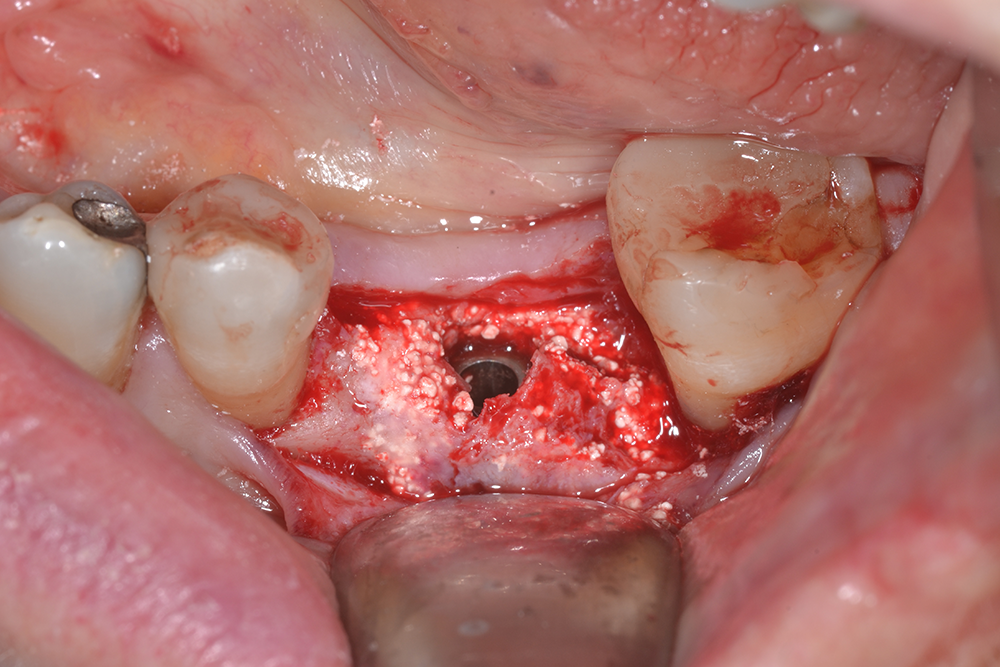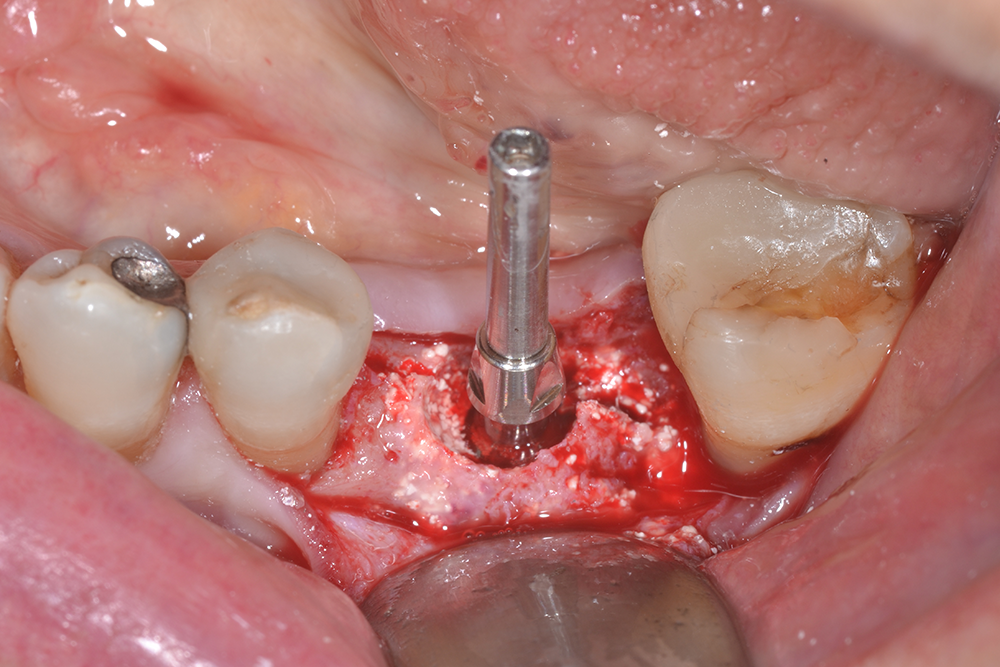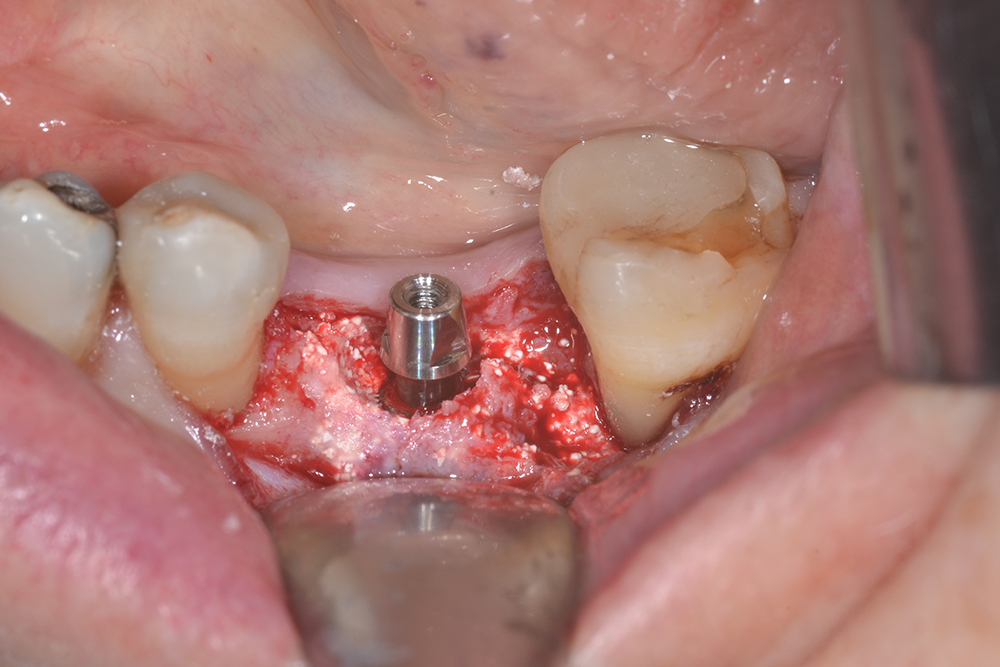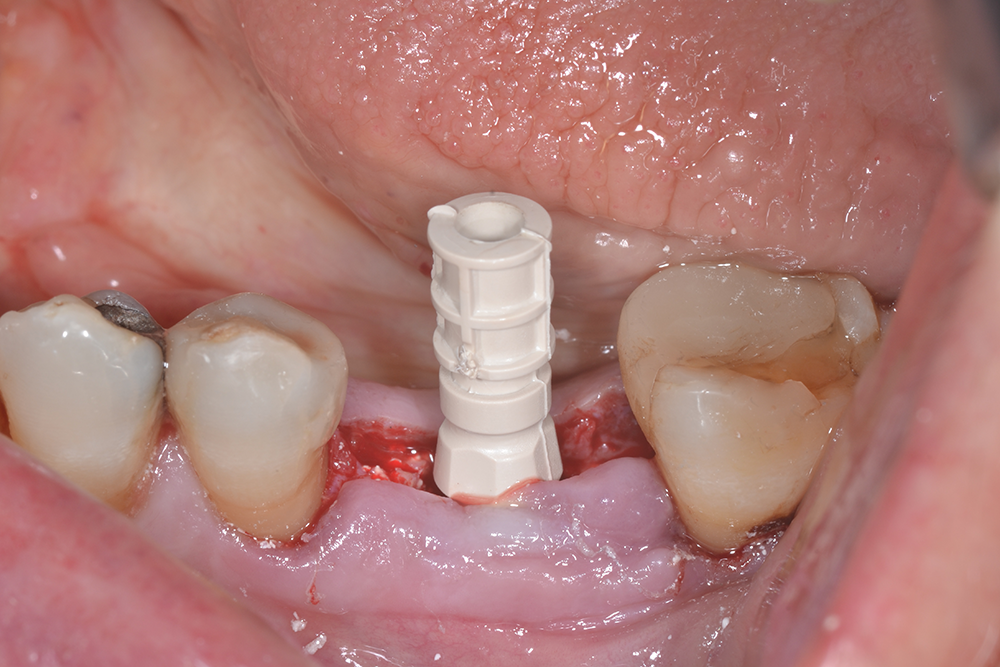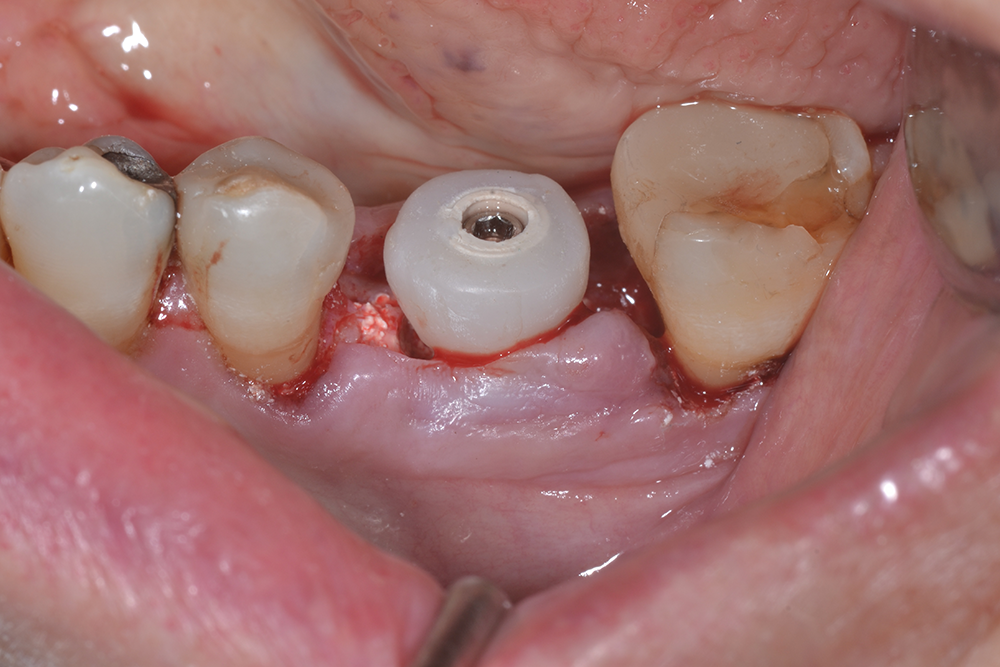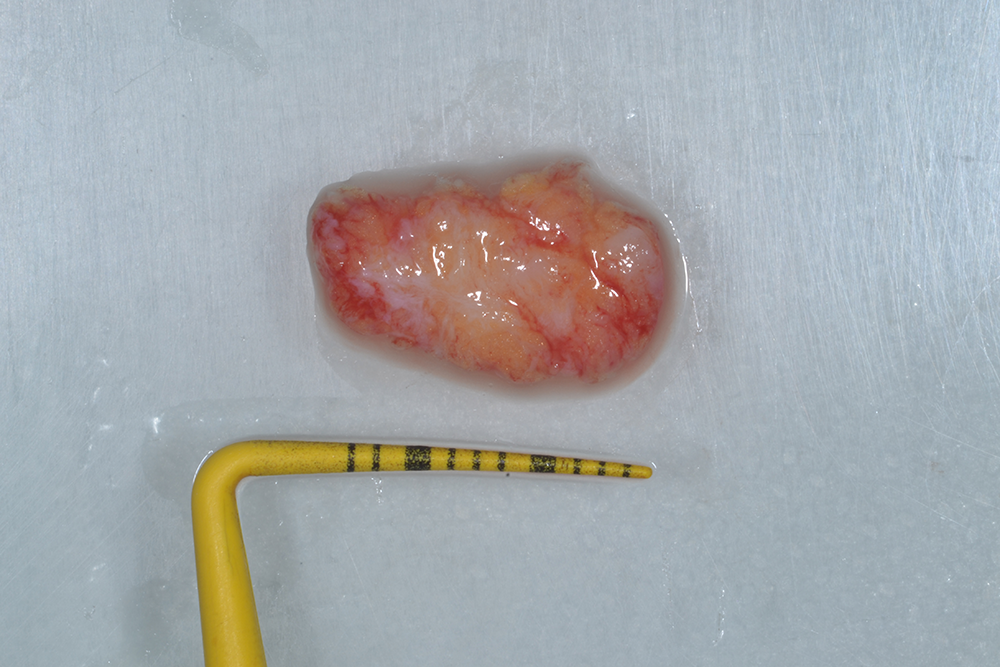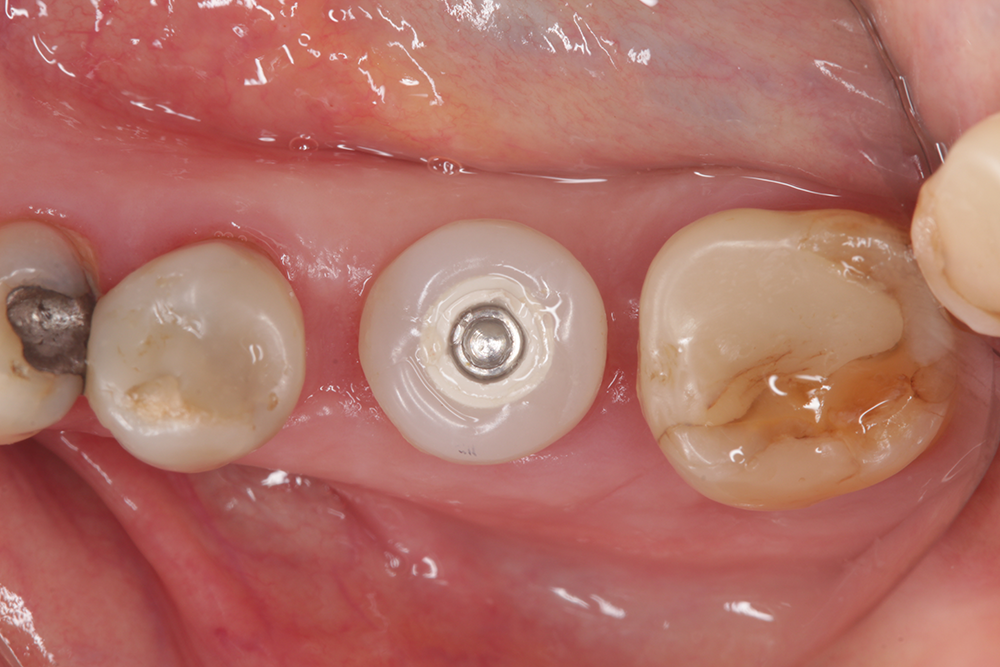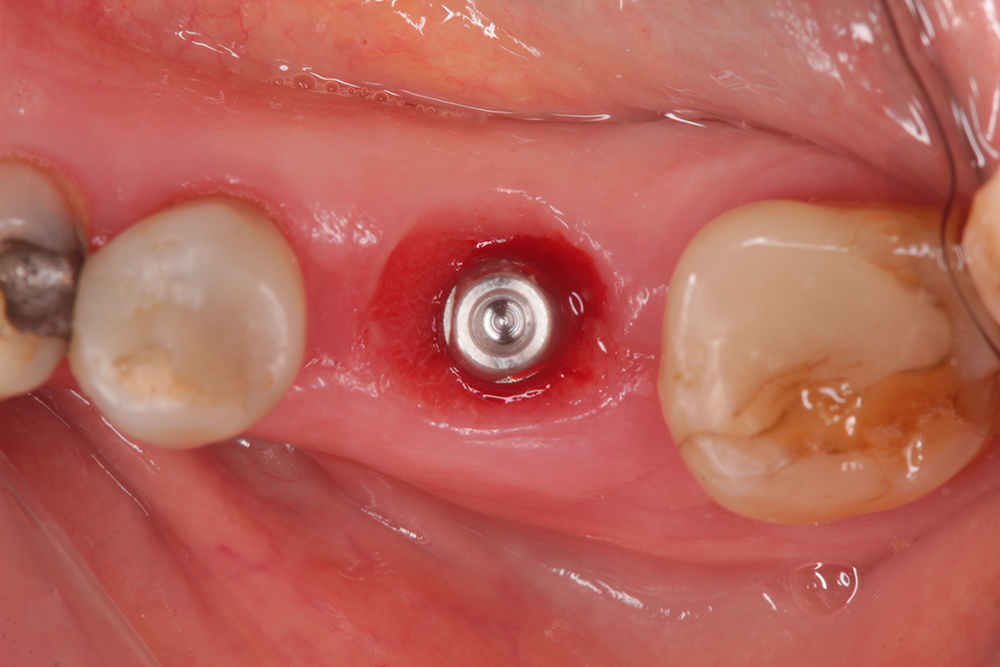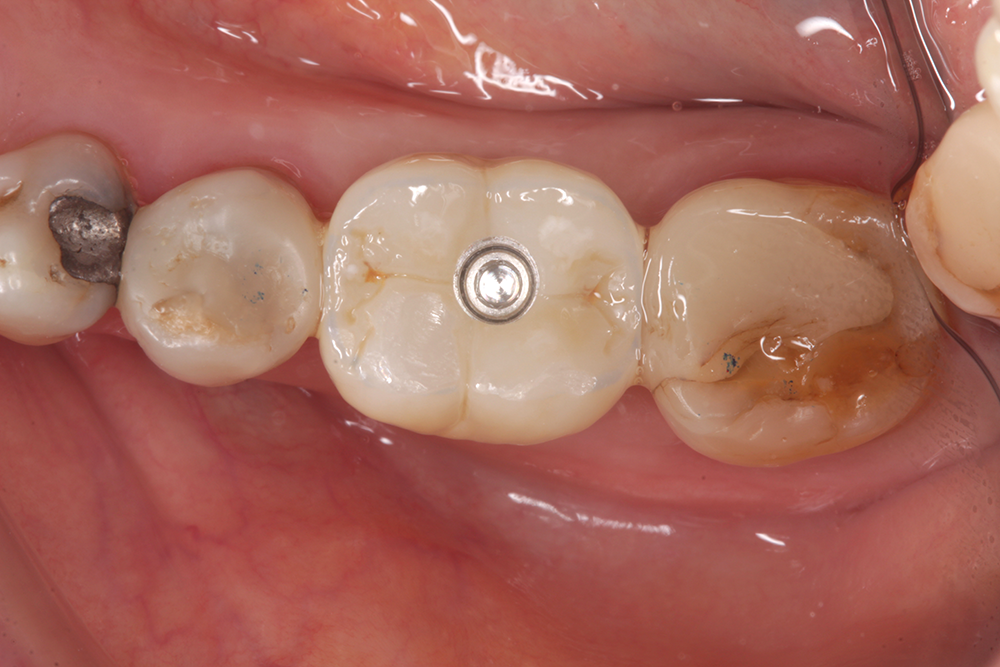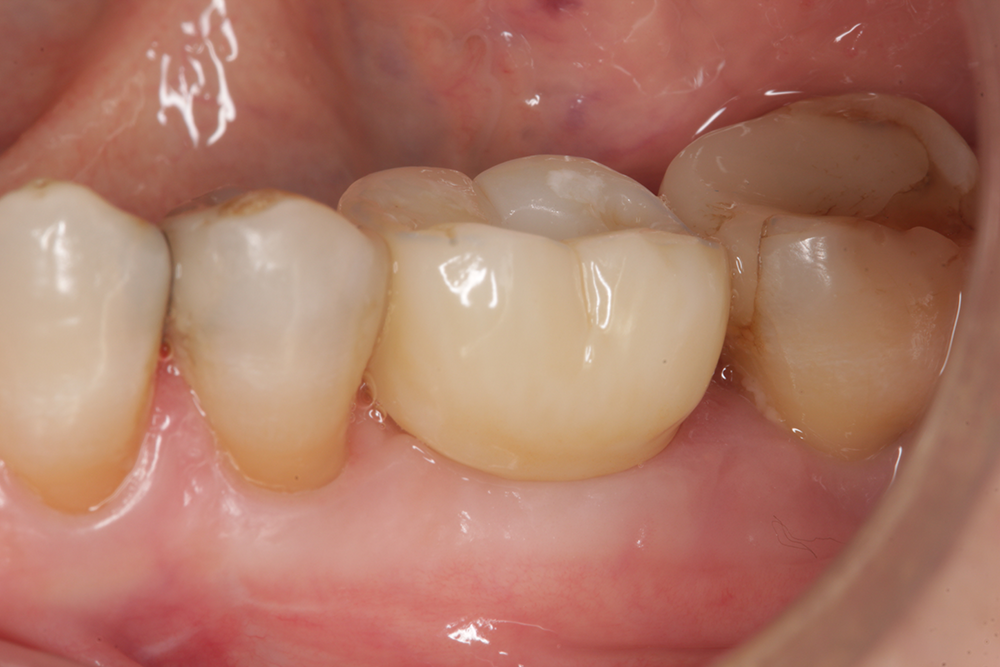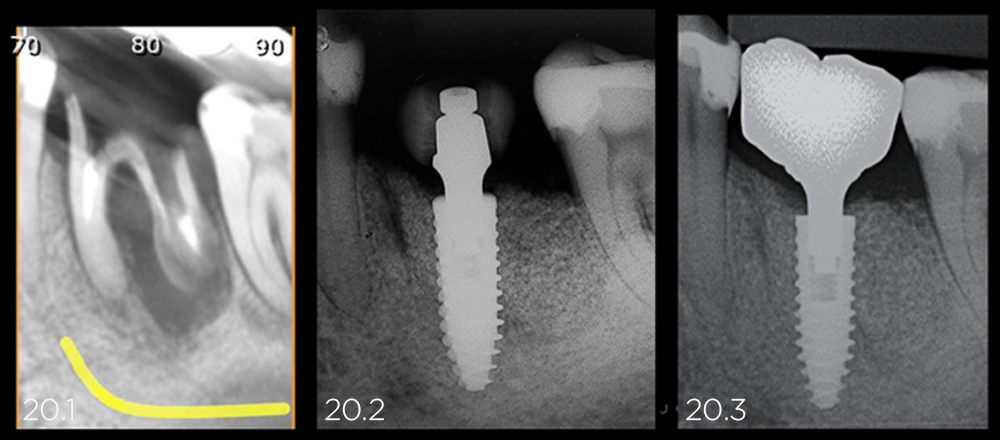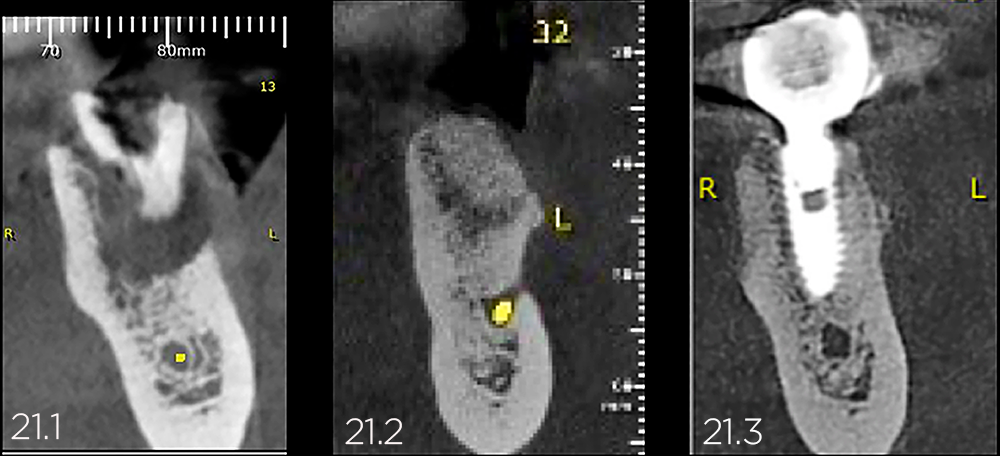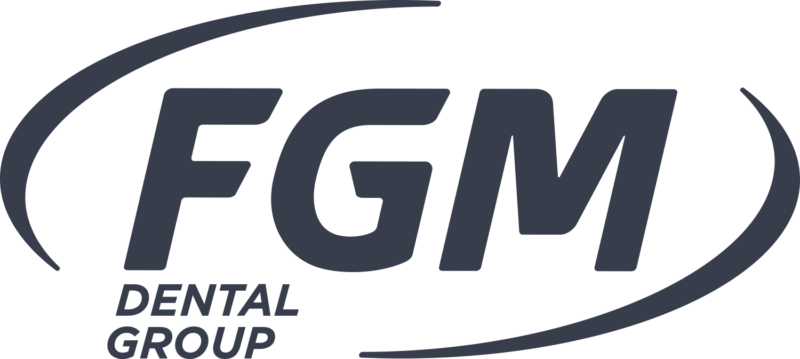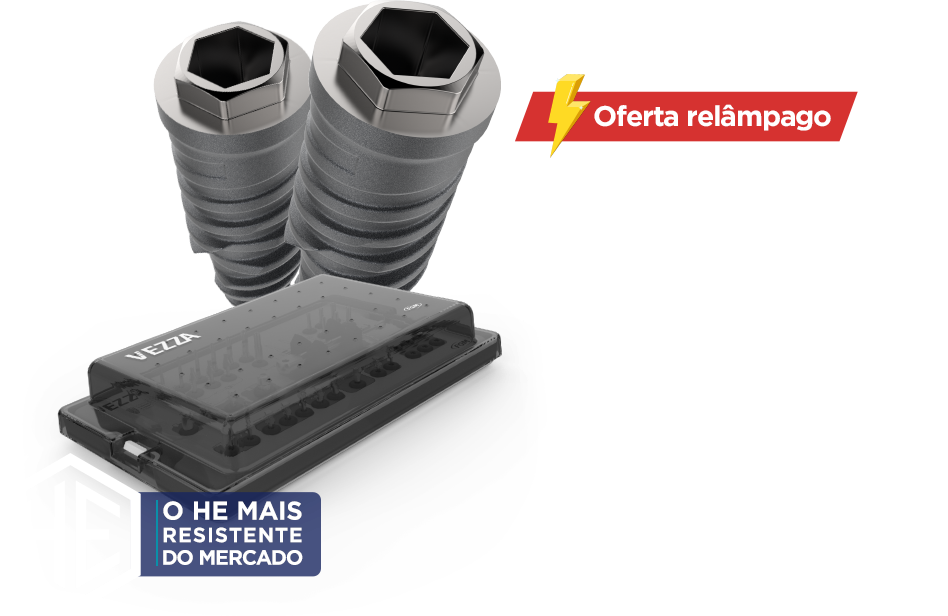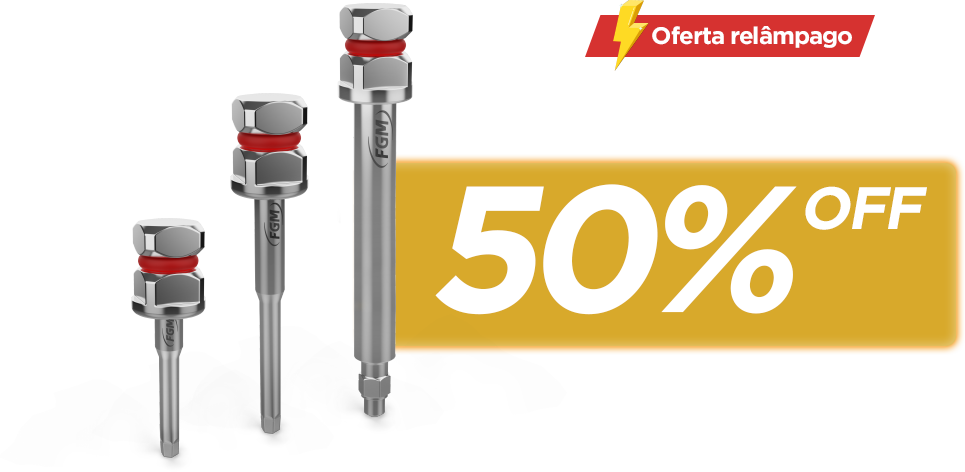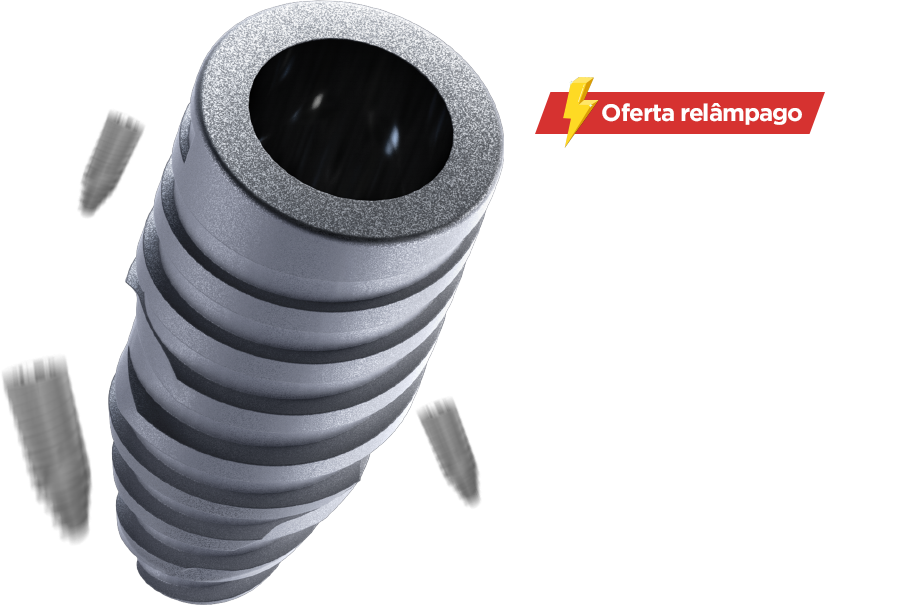Author: Dr. Jeferson José Fagundes
67-YEAR-OLD FEMALE PATIENT
Chief Complaint: Fracture of tooth 36, with advanced loss of bone tissue.
Initial evaluation:
Bone and gingival tissue regeneration, virtual planning, implant placement via guided surgery and prosthetic rehabilitation with ceramic crown on Arcsys abutment.
Treatment performed:
The patient was diagnosed with a root fracture in element 36. Tomography revealed an advanced bone lesion resulting from the root fracture, with loss of the buccal and distal walls.
Treatment was divided into stages: extraction of tooth 36 was performed plus curettage of the granulation tissues and synthetic bone graft with Nanosynt bone substitute, granulation 500-1000 µm. A collagen membrane and a PTFE barrier were also used.
After 6 months, a new tomography and intraoral scanning were requested to assess bone regeneration and carry out virtual planning in order to produce a prototyped guide for the surgical installation of the implant.
An Arcsys Implant 4.3 x 13 mm was placed using Arcsys Guided Surgery, which showed excellent primary stability (torque of 60 N.cm). Clinically, bone regeneration was completely successful. A 2 mm Arcsys Abutment was installed, and a personalized healing abutment was made with flow composite on a Multifunctional PEEK Transfer.
After 90 days, the transfer/molding procedures were initiated. The case was completed with the placement of a zirconia crown over a metallic link on the Abutment.
Reconstruction of hard and soft tissues is essential to obtain ideal conditions to place dental implants and prosthetic rehabilitation. The regeneration techniques guided bone grafting and the use of synthetic bone substitutes have shown excellent results in the treatment of maxillary bone defects. Reconstruction of the soft tissues and formation of an appropriate range of peri-implant keratinized tissue are essential to obtain an adequate emergence profile and essential for the health of the gingiva/bone/implant set.
Virtual planning and 3D printing of a prototyped guide have enabled greater precision and agility in the guided surgical installation of dental implants. It is concluded that the association of regenerative techniques of bone and gingival tissues with the technique of installing implants via guided surgery, presents an excellent alternative in rehabilitative dental treatment.
Step by step:
